Scandalul in care Apple a fost acuzata ca iPhone 6 se indoaie si iPhone 6 Plus se indoaie a motivat compania americana sa anunte ca doar 9 persoane au raportat aceasta problema si sa invite jurnalistii in laboratorul in care sunt testate produsele pentru a li se verifica rezistenta la accidente. Desi clipul video care a demonstrat pentru prima oara ca iPhone 6 se indoaie ar putea fi fals, compania Apple a detaliat totusi cele 5 metode de testare ale produselor sale si a oferit alte cateva informatii interesante.
Conform celor din Cupertino, 30.000 de iPhone 6 si iPhone 6 Plus au fost distruse in laboratorul sau pentru a se verifica daca ele sunt suficient de rezistente pentru a fi lansate pe piata, cifra fiind impresionanta. In urma cestor teste Apple a ajuns la concluzia ca daca asupra terminalelor se exercita o forta de maxim 25 KG in mijlocul carcasei, aceasta poate reveni la forma initiala, insa orice greutate mai mare decat aceasta va lasa carcasa indoita, dar terminalul utilizabil.
In ciuda admiterii faptului ca iPhone 6 si iPhone 6 Plus se indoaie daca o greutate mai mare de 25 KG este aplicata peste carcasa lor, Apple va schimba toate unitatile indoite accidental. Daca inca nu v-ati lamurit ca acest scandal este o non-problema, paote ca ar fi timpul sa o faceti.
Three-point bending: Apple’s tests place pressure on iPhones in varying degrees to make sure they can handle “reasonable” force in various situations.
Pressure-point cycling: The pressure-point cycling tests place “substantial” force across an iPhone’s display and encasing, while it is held along its edges, to ensure that an iPhone can be bent and pushed many times over during its lifespan. Apple runs this test hundreds of times to ensure durability.
Torsion testing: Apple clamps down an iPhone at both ends and twists the handset about 8,000 times. The company does this to make sure its devices can handle twists and torque in various situations, such as sitting on an iPhone unevenly.
Sit tests: A single phone is placed into simulations reflecting real-life scenarios, such as being in the back pocket of tight jeans. Phones are sat on, against a hard surface, thousands of times and in multiple positions in a pocket. Sit tests cover both orientations of the glass screen—facing out and facing in.
Real-life user studies: Another part of testing involves real humans, hundreds of company employees live with and use the phones in various situations to test for both durability and performance. Employees who have the highest usage rates on their phones are selected to take part, and Apple methodically checks the phones for any issues as they’re being used.


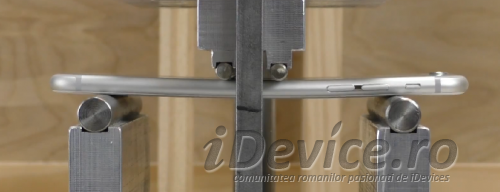


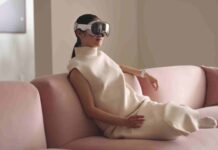



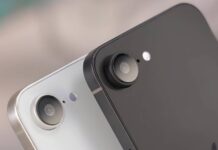
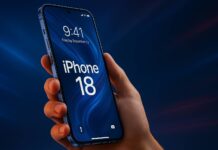
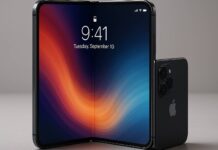






















Normal ca este o non-problema pentru ca este la Apple. Daca era la Samsung ne-am fi batut joc de ei vreo 2 ani. Corect?
Daca din 10 milioane de unitati vandite, vin 9 oameni si-ti pun 9 pe masa, e o problema ?
A mai aparut un video cu iPhone 6 + indoit de pe jumate nu de la volum.
E pe facebook. Bagati adresa facebook si dupa / puneti: video.php?v=690935101001879&set=vb.100002561851590&type=2&theater
Vizionare placuta! Doar 9 din 1.000.000.000 de iPhone 6 au aceasta problema! Nu va fie teama.
@merlin, 1 000 000(un milion), nu 1 000 000 000(un miliard).
@Dragos stiu, eram ironic asupra faptului ca se vand atat de multe incat doar 9 au problema asta.
Oameni buni, eu nu înțeleg de ce vă surprinde: iPhone 6+ este un telefon foarte lung, din aluminiu, care știm bine că este ușor maleabil. Fiind lung, forța necesară pentru a crea un moment de încovoiere destul de mare este relativ redusă (brațul forței este mare, etc), deci, se va îndoi și va rămâne așa, fiind aluminiu. Probabil că dacă am încerca același lucru cu un iphone 5, dar aplicând o forță îndeajuns de mare încât să creeze același moment de încovoiere, s-ar îndoi și acela. Da, este patetic, dar nu surprinzător. Poate că Apple a făcut o greșeală în proiectarea structurii interne, sau poate că acele persoane pur și simplu au supus telefonul unor situații…mai rar întâlnite (asta sigur s-a întâmplat), dar nu e o problemă chiar atât de mare precum apare în media.
Din puncutl meu de vedere cea mai mare problemă e update-ul la 8.0.1 care a cauzat probleme pentru foarte mulți utilizatori, punând-ui chiar în pericol, dar normal, pentru asta nu se face tam-tam așa mare…
@Bogdan,Iphone nu esti singurul telefon realizat din aluminiu. Celelalte telefoane nu se indoaie precum Iphone datorita unei carcase din magneziu care este introdusa in telefoane tocmai din acest motiv,ca telefonul sa nu se indoaie. Aceasta problema la Iphone nu este pt prima oara intalnita,pe net mai exista poze si cu Iphone 5 indoit,Apple ar fi putut sa faca cv astfel incat sa nu apara aceasta problema,tinand cont ca se prezinta ca fiind o firma premium care comercializeaza doar produse premium la niste preturi sincer putin rupte de realitate.
Zaone daca 1 din cele 9 era al tau era o problema , daca nu e , ne e problema ,asa e la romani !
@macheavel: Ai zis-o, bravo, logica beton! Degeaba as fi avut eu o problema cu el, daca lumea intreaga nu avea. Dar asa e la romani, destepti peste toti.
[…] dimensiunea 1/3″, 1.5µm dimensiune de pixel si f/2.2 deschidere. Spre deosebire de iPhone 6, iPhone 6 Plus are implementat si un stabilizator optic de imagine care are rolul de a compensa miscarile noastre […]